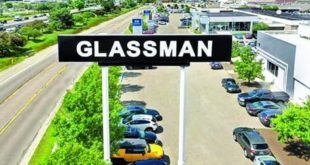
As vehicle sales fell sharply in the second quarter amid coronavirus pandemic conditions, the amount of subprime consumers originating auto loans slipped to its lowest recorded level, credit bureau Experian said this month.
Melinda Zabritski, senior director at Experian Automotive, said subprime market shares have contracted for years after peaking in 2013. COVID-19 conditions likely expedited the pullback, particularly in the new-vehicle market.
“Second quarter being what it was … the impact of quite a few people with lower credit scores being impacted a little bit more with unemployment rates, and just simply not being able to even shop in the current conditions,” Zabritski said.
New light-vehicle sales across the U.S. declined 33 percent during the second quarter, according to the Automotive News Data Center.
Subprime customers made up 22.2 percent of auto loans, new and used, originated in the second quarter for the first time since Experian began tracking the data in 2007. Deep subprime borrowers, with credit scores of 500 and below, dropped below 3 percent — another all-time low. The average credit score for a new-vehicle loan rose 4 points year over year to 721.
Jonathan Smoke, Cox Automotive’s chief economist, told Automotive News that consumer credit is still available, just trickier to obtain.
Dealerships are sending consumer auto loan applications to more lenders relative to pre-pandemic times. The increase might be because dealerships are having trouble getting the same approvals from lenders. Smoke, however, believes it’s due to significant variation in loan terms among lenders.
“Approval rates had fallen fairly dramatically in March and April, specifically, and then they have been staging a recovery,” he said. “It’s more about the terms of the deal. … It’s less attractive in terms of what lenders are offering.”
Smoke said based on transaction data from Cox’s finance and insurance software company Dealertrack, most consumers saw higher interest rates in August than earlier in the pandemic when the Federal Reserve cut interest rates to 0 percent and automakers pumped aggressive finance incentives into the market. Much of what consumers are seeing in the F&I office reflects lenders’ wariness with uncertainties that exist in consumers’ portfolios, including auto loan and lease deferrals and forbearance requests. The end of extended unemployment benefits and the lack of additional federal stimulus are also concerns moving through the virus period.
“They’re being very selective,” Smoke said. “It’s absolutely reflected in the terms and the rate, but it’s really in anticipation of something that hasn’t really materialized yet.”
Lindsay VanHulle contributed to this report.


